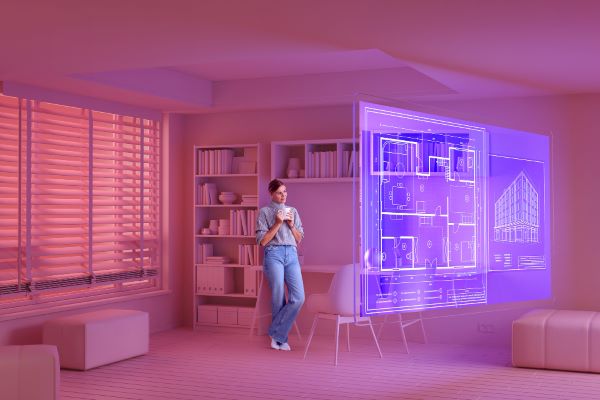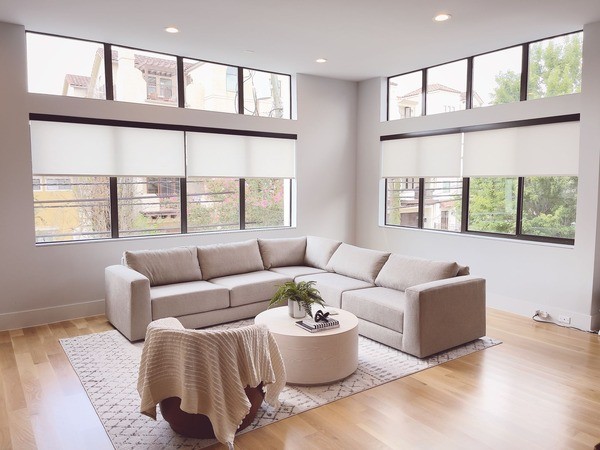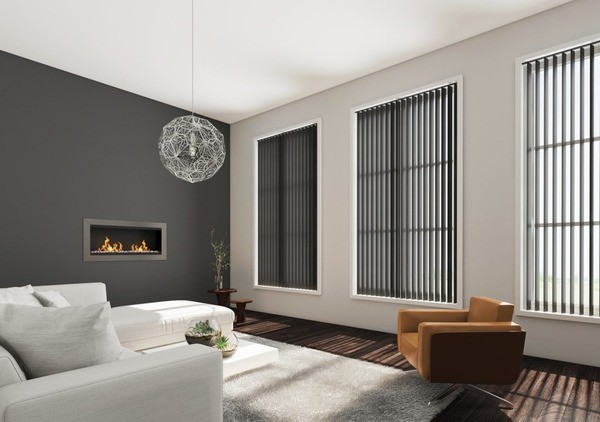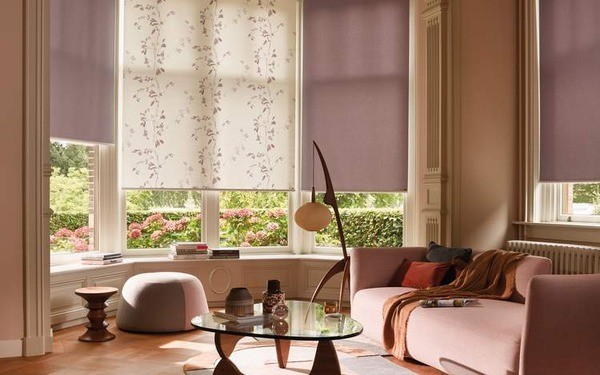
Introduction To Automated Blinds: How They Work And Why You Need Them
Imagine waking up in the morning and instead of fumbling with the curtains or blinds, you simply press a button and watch as your window coverings glide open, allowing the soft morning light to flood your room. Sounds like a dream, right? Well, with automated blinds, this can become a reality.
Powered by cutting-edge motorized mechanisms, automated blinds can be controlled remotely with the touch of a button or through smart home systems. Say goodbye to tangled cords and cumbersome manual adjustments. With automated blinds, you can effortlessly regulate the natural light entering your space, increase privacy, and even program them to adapt to your daily routine.
So, whether you’re looking to streamline your morning routine or create a more eco-friendly and secure home, automated blinds are the perfect solution. Get ready to revolutionize your living space with this innovative and stylish window covering technology.
How do Automated Blinds Work?
Automated blinds, also known as motorized blinds or smart blinds, are window coverings that can be controlled electronically. Unlike traditional blinds that require manual adjustments, automated blinds offer the convenience of remote operation. Using a remote control, smartphone app, or integration with a smart home system, you can effortlessly open, close, or adjust the position of the blinds.
These blinds are equipped with motors that enable smooth and precise movement. The motors can be powered by batteries or connected to an electrical outlet for continuous operation. With automated blinds, you no longer have to struggle with tangled cords or exert physical effort to adjust the blinds. It's as simple as pressing a button or using voice commands if integrated with a virtual assistant like Amazon Alexa or Google Assistant.
Automated blinds come in various designs, materials, and styles, allowing you to choose the perfect option to complement your home decor. Whether you prefer roller blinds, vertical blinds, or horizontal blinds, there is an automated solution available for every window type.
Benefits of Automated Blinds
These blinds offer a wide range of benefits that make them a worthwhile investment for any homeowner. Here are some of the key advantages:
1. Convenience
With these blinds, you can control your window coverings with ease. No more struggling with tangled cords or reaching for hard-to-reach blinds. Simply press a button on your remote control or smartphone app, and the blinds will adjust to your desired position effortlessly.
2. Energy efficiency
Automated blinds can contribute to energy savings by allowing you to regulate the amount of natural light entering your space. By adjusting the blinds to block out direct sunlight during hot summer days or opening them to let in sunlight during colder months, you can reduce the need for artificial lighting and heating, thus saving on energy costs.
3. Enhanced privacy and security
Automated blinds provide an added layer of privacy and security to your home. With the ability to control the blinds remotely, you can easily adjust them even when you're away from home, giving the illusion that someone is present. Additionally, automated blinds eliminate the need for cords, reducing the risk of accidents, especially in homes with children or pets.
4. Protection for furniture and flooring
Direct sunlight can cause fading and damage to furniture, flooring, and other interior elements over time. Automated blinds allow you to protect your investments by blocking out harmful UV rays and also reducing the impact of sunlight on your belongings.
5. Customization and integration
Automated blinds can be customized to fit your lifestyle and preferences. Whether you want to create specific schedules for opening and closing the blinds or integrate them with your smart home system for seamless automation, the possibilities are endless. You can even control the blinds using voice commands if they are integrated with virtual assistants like Amazon Alexa or Google Assistant.
Are Automated Blinds Eco-friendly?
These blinds, although convenient and efficient in managing light and privacy, raise pertinent questions regarding their environmental impact. The manufacturing process of these blinds often involves non-biodegradable materials, and their electronic components can contribute to electronic waste when disposed of improperly. Additionally, the energy required to produce, operate, and maintain these automated systems might counteract their eco-friendly benefits. Despite their potential energy-saving capabilities, their overall impact on nature remains debatable, demanding a more comprehensive assessment of their lifecycle and disposal methods to ascertain their true environmental friendliness.
But do not worry about using them. These blinds offer several nature-friendly advantages that contribute positively to environmental conservation efforts. These innovative blinds are designed to maximize energy efficiency by intelligently managing natural light and heat, reducing the reliance on artificial lighting and heating systems. By automatically adjusting to the changing daylight and temperature, they help minimize energy consumption within buildings, consequently lowering carbon emissions. Moreover, some automated blinds are crafted from sustainable materials or can be recycled at the end of their lifecycle, lessening their environmental footprint. Their smart features encourage a more mindful use of resources while enhancing indoor comfort, making them a step towards sustainable living when utilized thoughtfully and in conjunction with other eco-conscious practices.




